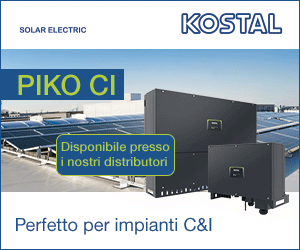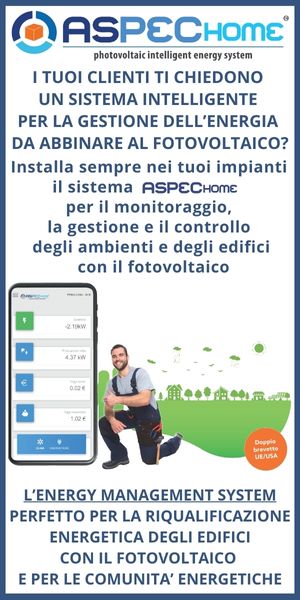Signed by the Ministers of Economic Development and the Environment Friday, May 6, published in the Official Gazette May 12, the ministerial decree on the fourth Conto Energia regulating Italian PV contains several innovations, both compared to the previous incentive scheme and to the one we expected. We summarised briefly the most important aspects of the bill (download pdf).
Contrary to what many people hoped, reductions will start as early as June 1 and are summarised in the tables below (for the second half of the year, 2012 and subsequent years, see page 32 of the document). The power classes of conventional plants are the same as in the third Conto Energia: from 1 to 3 kW, from 3 to 20 kW, from 20 to 200 kW, from 200 kW to 1 MW, from 1 to 5 MW and above 5 MW.

Conventional plants are still divided between plants installed “on buildings“, featuring more generous premiums, and “other plants“. Modules that replace carports, greenhouses, noise barriers, shelters and platform roofs will obtain a feed-in premium that is equal to the arithmetic mean between the premium granted to “PV plants installed on buildings” and that applicable to “other PV plants”.
To obtain the feed-in premium, applications shall be submitted at the time of plant commissioning, i.e. when the plant is connected, provided that grid operators ensure the connection within a certain period of time (30 days), otherwise there will be specific allowances to be determined by the Energy Authority (tit. 1, art. 7, page 11 of the document).
The signed version of the decree defines “small plants” as those integrated on buildings producing less than 1 megawatt of power, ground-mounted plants not exceeding 200 kW using the net-metering system, and those of any size when installed on buildings or areas owned by the public administration (tit. 1, art. 3, letter u, page 9). Unlike large plants, until the end of 2012 small plants are not subject to spending limits and are not required to be registered in the ranking list, whereas large plants will have to be registered from August 31 (tit.1, art.8, page 12).
The new Conto Energia provides a total spending limit for all plants (6-7 billion for the period 2011-2016, equal to about 23 GW) and semi-annual expenditure caps. For example, 300 million for the second half of 2011 (approximately 1,200 MWp), 150 million for the first half of 2012, 130 for the second half and so on.
Until the end of 2012, large plants are allowed to apply for the incentive “within preset cost limits“, while small plants, as mentioned above, can in any case.
From 2013 to 2016, however, exceeding the approximate budget established for a given period does not restrict access to the incentive tariffs, but results in an additional reduction of the incentive for the next period.
In addition, as of 2013, the feed-in premium will be turned into an all-inclusive tariff. This means that the incentive tariff will also include the sale of electricity to the grid, while a separate tariff will be established for self-consumption (see tables referring to the first half of 2013, for following periods page 34 of the bill).

The combination of incentives is described under art. 5 of the first title, on page 9. There are favourable conditions for public schools (and even for private schools) which, from 2012, will be allowed to combine feed-in premiums with capital grants up to 60% of the cost of investment. Still, they cannot use the Conto Energia and tax deductions at the same time. This factor should be taken into account, since the package includes a premium for PV installations combined with building efficiency measures (tit 2, art. 13, page 16). Depending on how much consumption is reduced, the increase in the feed-in tariff can reach up to 30%, but the premium is “alternative to other forms of incentive approved for the same measures entitling to the award”, i.e. 55% or incentives that will replace it.
The new bill includes other increases in the tariff, even though they cannot be combined with each other (tit.2, art.14, page 17). The tariff provides a 5% premium for plants managed by municipalities with fewer than 5 thousand inhabitants or ground-mounted plants on brownfield sites, landfills, exhausted quarries, and so on. There is a premium of 0.05 € per kWh for rooftop plants that replace asbestos roofing. Finally, there is a 10% increase in the incentive for the plants whose cost of investment, excluding labour, is composed at 60% or more by components manufactured within the European Union.
More generous tariffs and a different division of power classes are then granted to BIPV system with innovative features up to 5 MW(tit. 3 on page 18 and tables on page 35). Until the end of 2011, plants of this type producing less than 20 kW are offered an inviting tariff of almost € 0.43 per kWh. The guideline containing the technical specifications of such plants should be published by the GSE by June 30.
Higher premiums are also provided for concentrated photovoltaic plants, again not exceeding 5 MW. Only legal persons and public entities, and not individuals,are eligible for the incentives (tit. 4, page 18, tariff tables on page 38). Finally, another decree will determine how to identify the photovoltaic plants using innovative technologies that will be entitled to special tariffs, which are also to be defined.



.jpg)






























